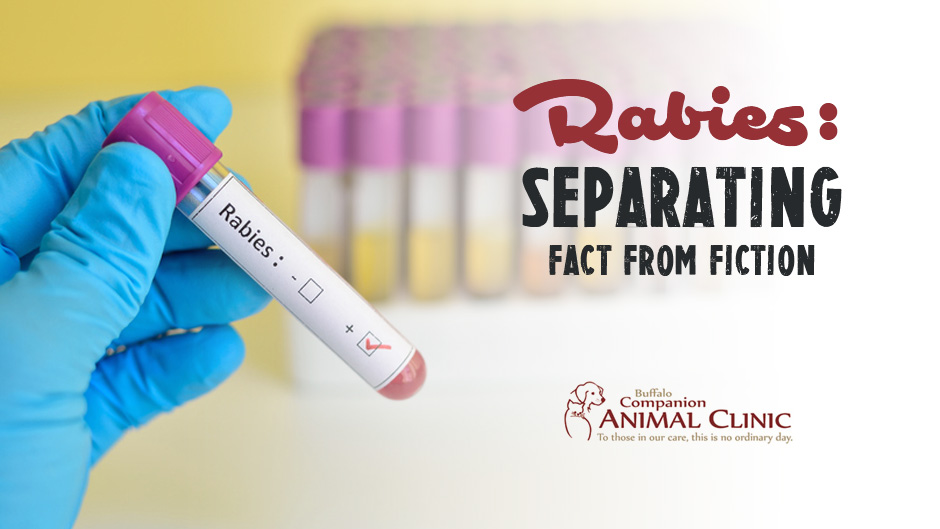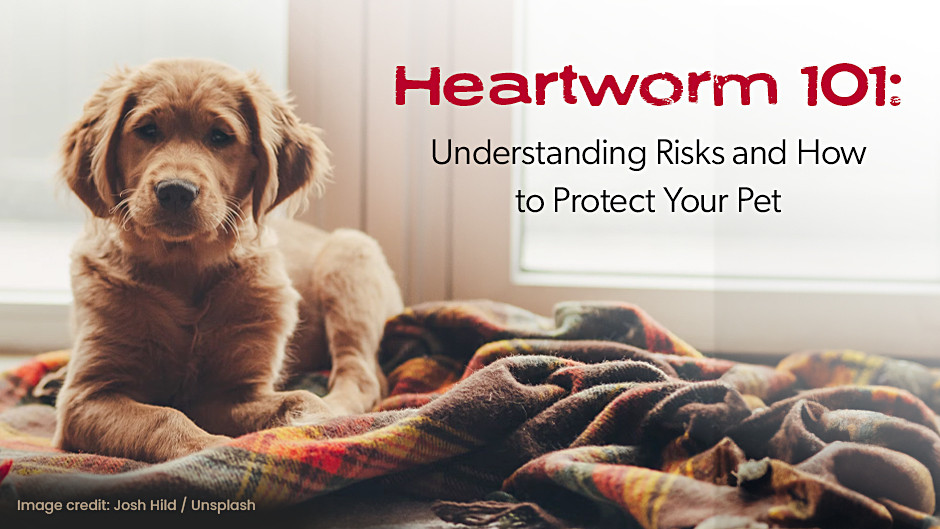Pet Health Articles
Rabies: Separating Fact from Fiction

My animal friends might protest getting a rabies vaccination, but deep down they appreciate that you love them enough to keep them safe. I would like to have them around for a long time, and I'm sure that you would do. Here is what you need to know to keep rabies away.
Sincerely, Carlos
When you consider the serious and deadly nature of rabies, it’s easy to understand why so much fear and misinformation continues to surround it. That is why making sure that you have the right information is so essential. You don’t want to expose your dog or cat to unnecessary risk, yet it’s important not to act on information that may be inaccurate. The information below will help you separate fact from fiction when it comes to rabies.
Common Misinformation About Rabies
The idea that a companion animal doesn’t develop the disease of rabies until the brain becomes affected is false. If an infected racoon, bat, or other type of wild animals bites your pet, he has rabies from that moment on. It can take anywhere from 10 to 60 days for the infection caused by rabies to reach your dog or cat’s central nervous system and cause widespread damage. The incubation period depends on the location and severity of the bite.
Another common assumption is that a pet can only contract rabies if an infected animal bites her directly. Unfortunately, she only has to have contact with the infected animal’s saliva to acquire the disease. This can easily happen when an animal with rabies has saliva on its claws and scratches your pet.
Many people get the idea that a pet infected with rabies foams at the mouth all the time because this is what they have seen on television shows and movies. However, this symptom typically only occurs at the latest stages of rabies and even then it’s not constant. If you’re concerned that your pet may have come in contact with an infected animal, watch for the following:
• Behavioral changes, such as a normally docile pet becoming unusually aggressive
• Disorientation
• Hind leg paralysis
• Lack of appetite
• Seizures
Please contact us at Buffalo Companion Animal Hospital immediately if you notice any of these symptoms. They don’t necessarily mean your pet has rabies, but we do need to conduct testing. Unfortunately, no cure exists for advanced rabies. Animals at this stage should be euthanized to prevent suffering and further spread of the disease.
The earliest stage of rabies is the prodromal phrase, which lasts just a few days. Animals typically start to show a behavioral change at this point. The furious phase can last up to a week and dogs and cats show marked restlessness and irritability. The last phase is the paralytic phase in which nerves of the body are affected and the animal eventually succumbs to respiratory failure.
Preventing Rabies
Keeping up-to-date on your pet’s vaccines is essential. Both puppies and kittens receive a vaccination followed by a booster shot every three years. You should also avoid allowing your animal to roam free, particularly if you live near a wooded area. With some common sense and commitment to keeping the recommended vaccine schedule, you can protect your pet from this terrible disease.









